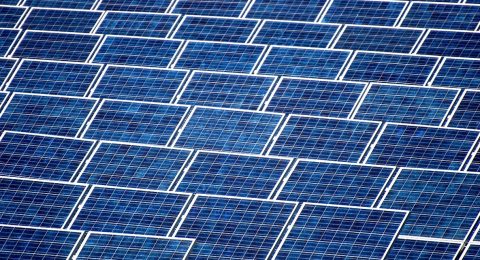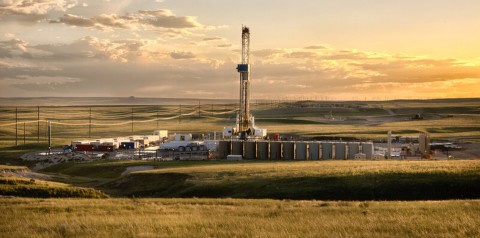Since the Russian-Ukrainian crisis started, Europe has been looking for alternative supplies for Russian oil and gas. Egypt is one of the recommended countries to be part of the solution. Not only due to having amounts of natural gas for exports, but also because of its efforts in developing the needed infrastructure for exports. During the past eight years, Egypt exerted big efforts to improve its pipeline infrastructure, especially those that connect the country to the other world countries.
Why Pipelines?
Pipelines are a necessary mean to transport oil and gas from country to country. They are also used to transport the raw materials from areas of production to refineries and chemical plants. Additionally, they are used to transmit the final product to gasoline terminals, natural gas power plants, and other end users. They are cost-efficient in transportation, especially the onshore ones and in case of short distances.
Egypt considers natural gas as the most important source of energy, especially after achieving self-sufficiency and directing the surplus production toward exporting. This occurred due to the unprecedented rates of production which reached 6.8 billion cubic meters per day (bcm/d) coming from the big number of discoveries and fields development. Due to these efforts, Egypt ranked the second in Africa in natural gas production and the 14th globally in 2020.
This also pushes the country to put great interest on its infrastructure and pipelines to allow exports. Egypt already has a pipeline for exporting natural gas and recently it seeks to add more pipelines to connect to other countries, especially within the East Mediterranean region.
Arab Gas Pipeline (AGP): Strategic Arabic Gas Corridor
AGP was established in Egypt in Sinai to export Egyptian natural gas to Jordan, Syria, and Lebanon having branches passing through Israel. It started in 2003 at a cost of $1.2 billion. Its construction was implemented in three phases, according to Egypt Today. The first phase was from Egypt to Jordon at a capacity of 10 million cubic meters per year (mmcm/y). Then the second phase included two stages during which the natural gas was transported from Jordan to Jordanian-Syrian borders. This phase was launched in February 2006 and completed in March 2008.
After that, the third phase was commissioned in July 2008 to transmit the natural gas from the Jordanian-Syrian border to the city of Homs in Syria. In addition, the pipeline is extended to reach Lebanon then Turkey then Europe, but it is suspended due to the Syrian war. The line will be used to carry Egyptian natural gas to Lebanon after the two countries have agreed to export the gas to Lebanon through Syria. Moreover, Iraq announced its desire to connect to AGP, so it can send its gas to Egypt to be exported to Europe.
Toward More Infrastructure Besides AGP, Egypt is looking forward to more pipelines in the coming few years especially to support its new position as regional hub for trading oil and gas. In this regard, Egypt seeks since 2018 to establish a pipeline from Cyprus to Egypt. This planned pipeline will connect the Aphrodite gas field to the Egyptian liquefied natural gas (LNG) plants with costs estimated at $800 million to $1 billion. In May 2022, Minister of Petroleum and Mineral Resources Tarek El Molla announced the start of construction works with a capacity of 4.5 trillion cubic meters to be processed in the Egyptian plant and then exported to Europe.
The pipeline is expected to start operation between 2024 and 2025. Furthermore, Egypt and Israel are studying the establishment of a new onshore pipeline with investments of $200 million to transport 3-5 bcm/y of natural gas from Israel to Egypt to be liquefied in Egypt and then shipped to Europe. Egypt, Israel, and the EU have recently signed a tripartite agreement to boost natural gas exports to Europe. These pipelines are expected to allow Egypt to gain additional revenues from transportation in addition to more investments opportunities.
Brightening Inside
Egypt has also given great importance to reinforcing the local grids infrastructure. In this regard, Egypt constructed the Ain Sokhna/Wadi hagool/ Al-Hafayer pipeline with investments EGP219.2 million in 2018. It also established Ras Bakr/ Ras Ghareb/ Assiut butane pipeline with costs of EGP 475.5 million in 2018.
El-Sukhna/ El Tebbin pipeline for mazut and diesel was completed in 2019 with costs of EGP 902 million. Moreover, the country updated and replaced several pipelines including Mahala-Shawa petroleum pipeline, Suez/ Mostorod mazut pipeline, Suez/ Mostorod petroleum pipeline, Benha/ Zagazig diesel pipeline, Abu Qir/ Khorshid diesel pipeline in the period between 2018 to 2020.
Per natural gas distribution, Egypt constructed pipelines of a total length of 880 km with investments of EGP 11.2 billion during the period from 2014/15 until December 2020, a report issued by the petroleum ministry stated. Also, Egypt is currently establishing pipelines with a total length reached 335 km and costs of about EGP 7.735 billion. In October 2021, the petroleum ministry announced that it started to construct a gas pipeline in the Western Desert with a capacity of 15 million cubic feet per day (mmcf/d).








